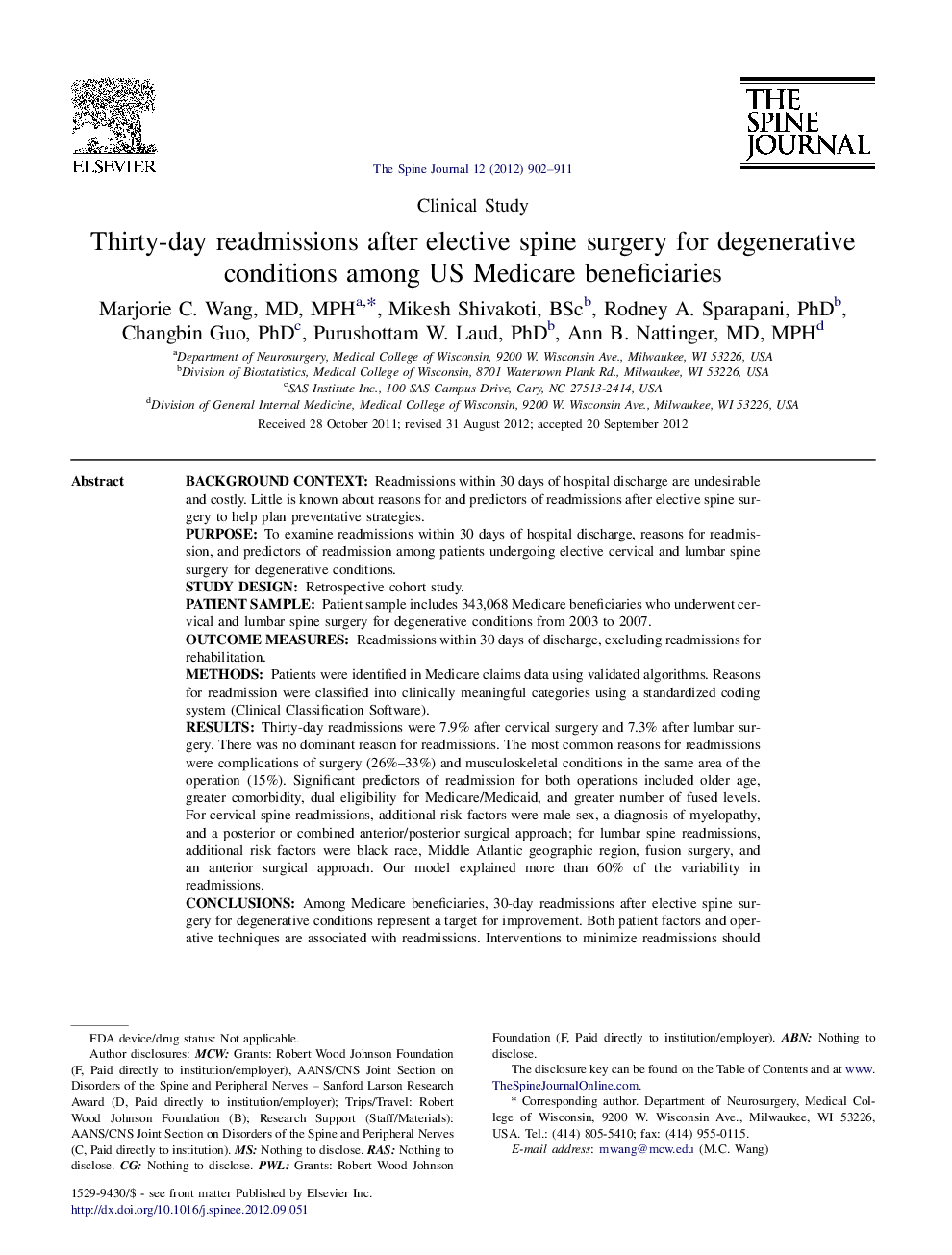| Article ID | Journal | Published Year | Pages | File Type |
|---|---|---|---|---|
| 4097418 | The Spine Journal | 2012 | 10 Pages |
Background contextReadmissions within 30 days of hospital discharge are undesirable and costly. Little is known about reasons for and predictors of readmissions after elective spine surgery to help plan preventative strategies.PurposeTo examine readmissions within 30 days of hospital discharge, reasons for readmission, and predictors of readmission among patients undergoing elective cervical and lumbar spine surgery for degenerative conditions.Study designRetrospective cohort study.Patient samplePatient sample includes 343,068 Medicare beneficiaries who underwent cervical and lumbar spine surgery for degenerative conditions from 2003 to 2007.Outcome measuresReadmissions within 30 days of discharge, excluding readmissions for rehabilitation.MethodsPatients were identified in Medicare claims data using validated algorithms. Reasons for readmission were classified into clinically meaningful categories using a standardized coding system (Clinical Classification Software).ResultsThirty-day readmissions were 7.9% after cervical surgery and 7.3% after lumbar surgery. There was no dominant reason for readmissions. The most common reasons for readmissions were complications of surgery (26%–33%) and musculoskeletal conditions in the same area of the operation (15%). Significant predictors of readmission for both operations included older age, greater comorbidity, dual eligibility for Medicare/Medicaid, and greater number of fused levels. For cervical spine readmissions, additional risk factors were male sex, a diagnosis of myelopathy, and a posterior or combined anterior/posterior surgical approach; for lumbar spine readmissions, additional risk factors were black race, Middle Atlantic geographic region, fusion surgery, and an anterior surgical approach. Our model explained more than 60% of the variability in readmissions.ConclusionsAmong Medicare beneficiaries, 30-day readmissions after elective spine surgery for degenerative conditions represent a target for improvement. Both patient factors and operative techniques are associated with readmissions. Interventions to minimize readmissions should be specific to surgical site and focus on high-risk subgroups where clinical trials of interventions may be of greatest benefit.
